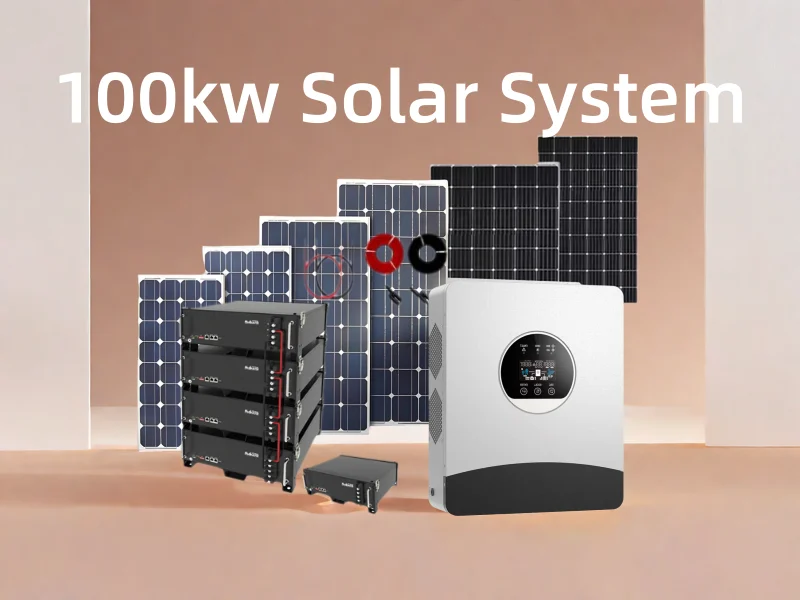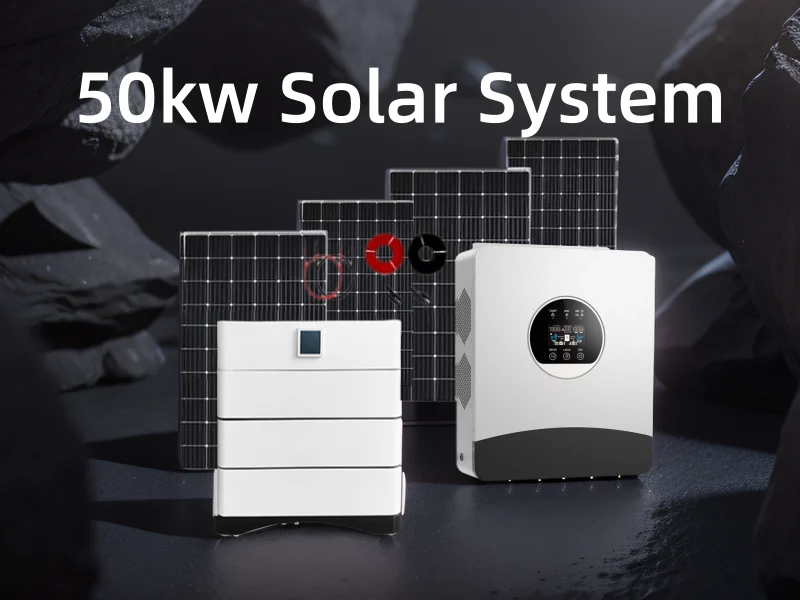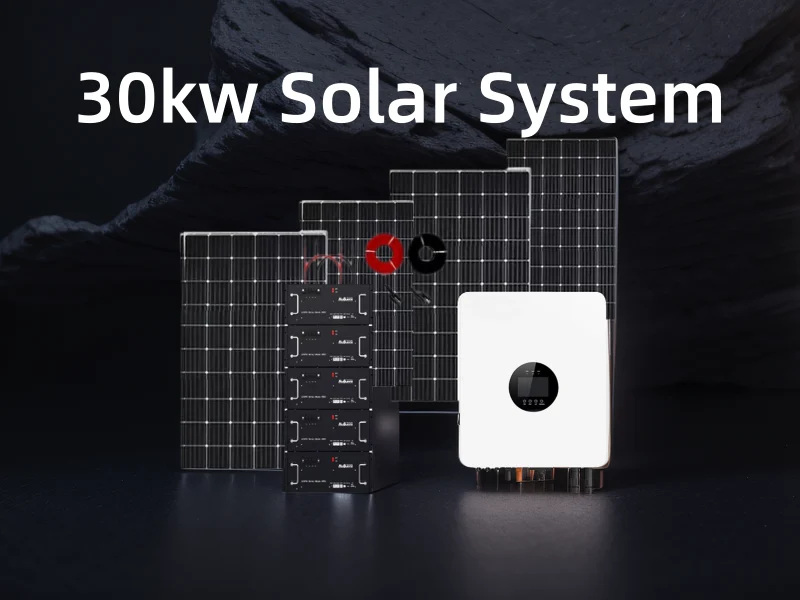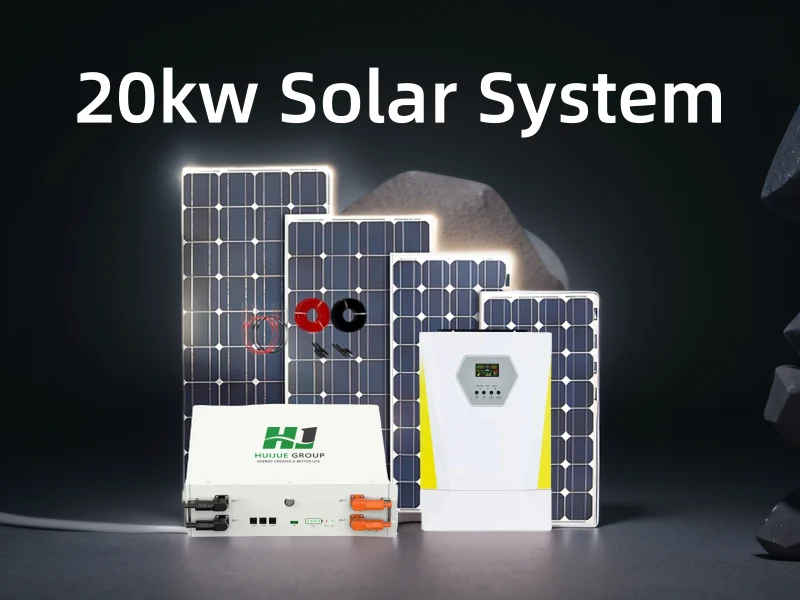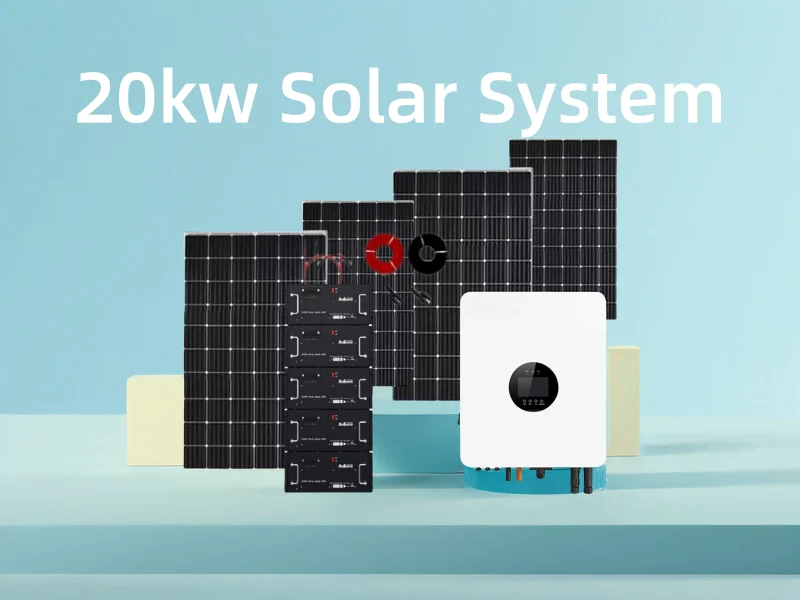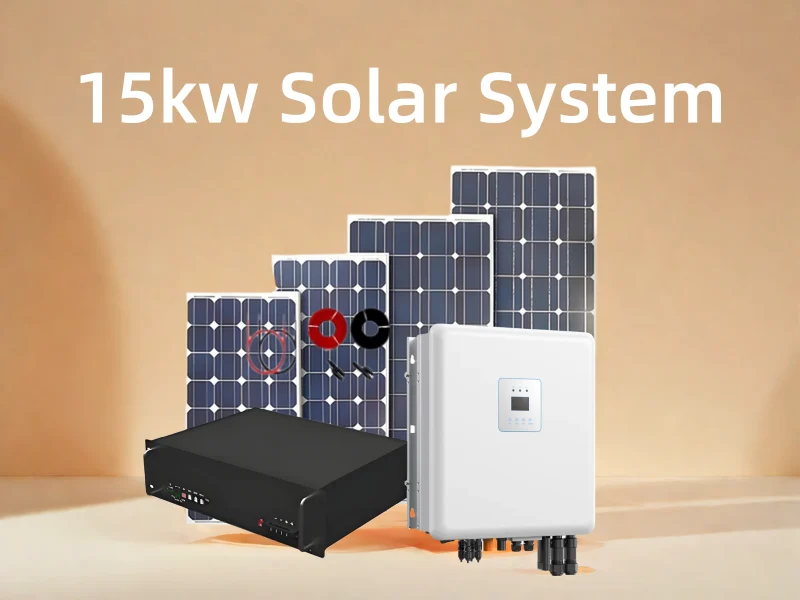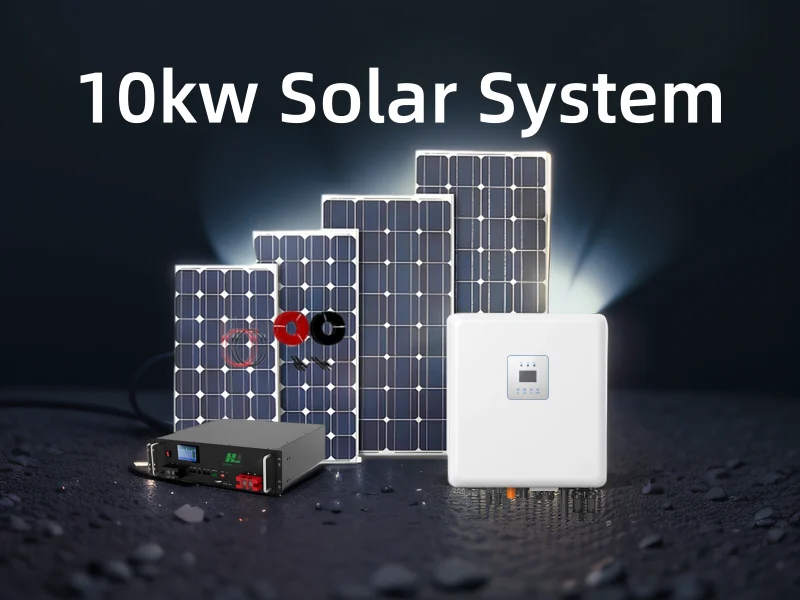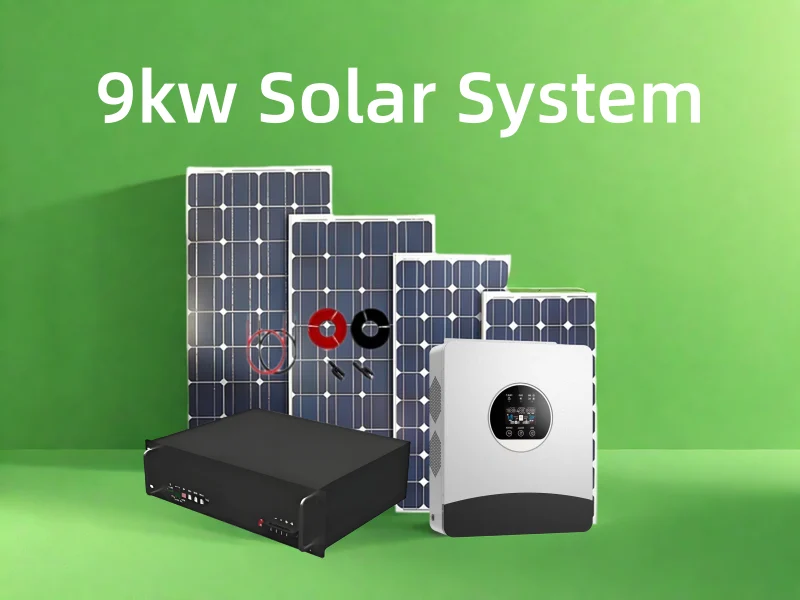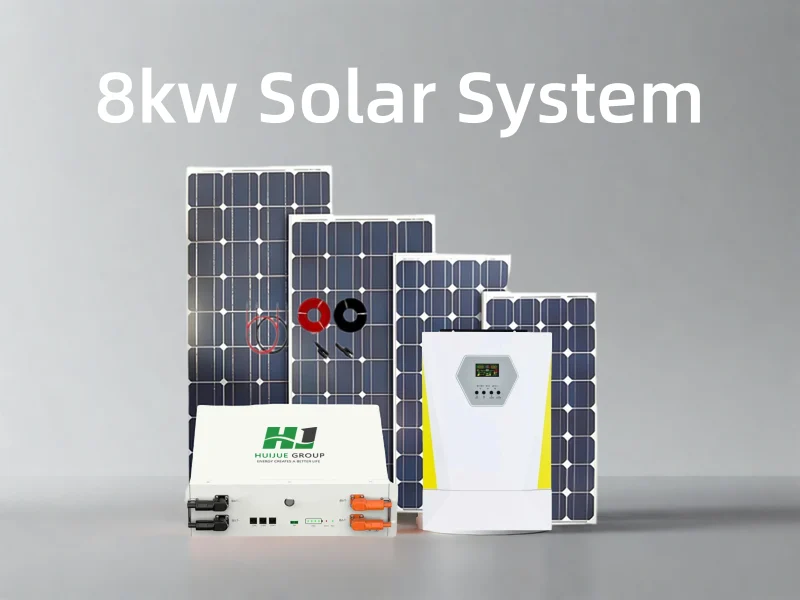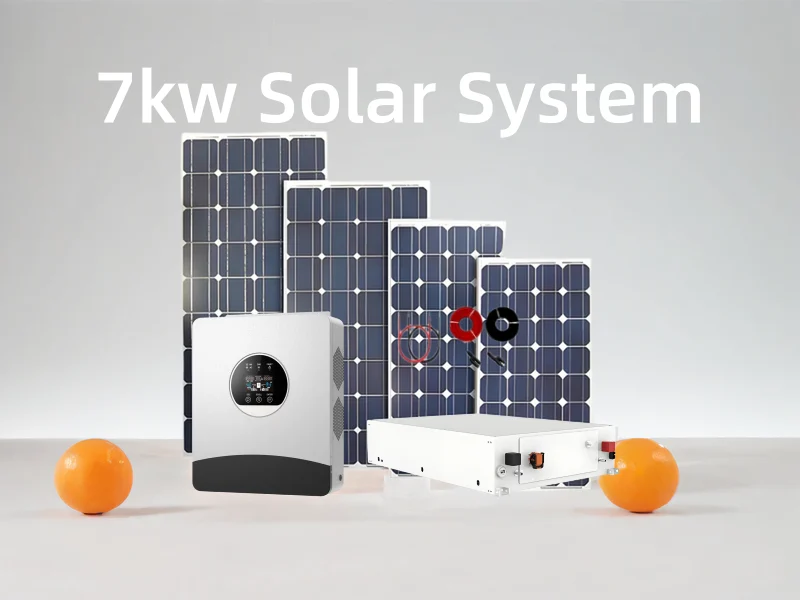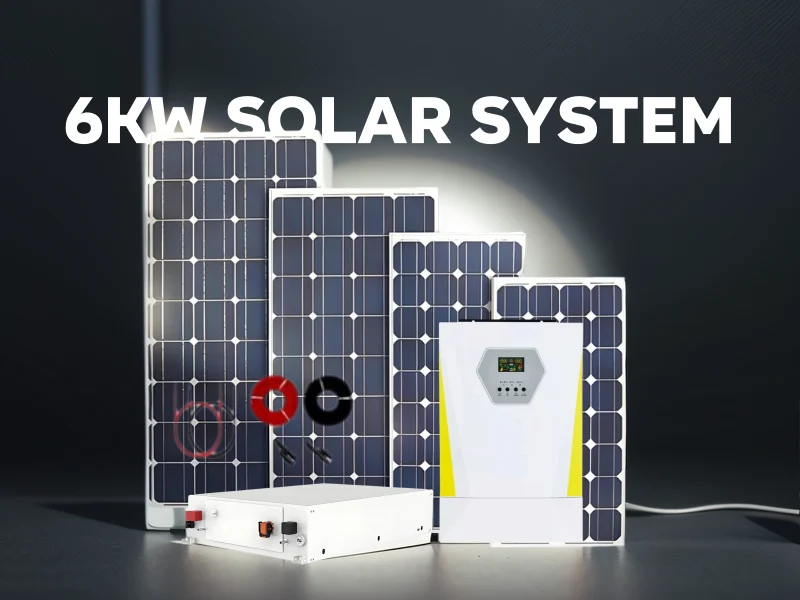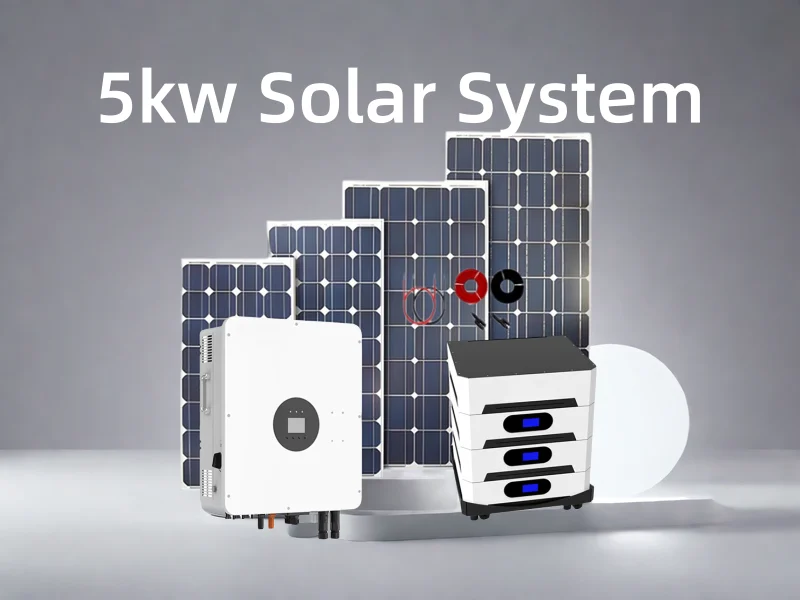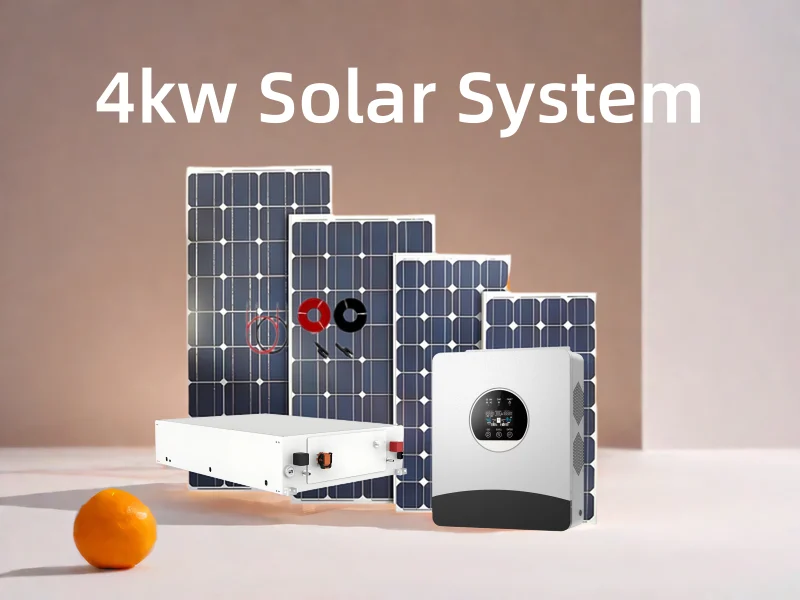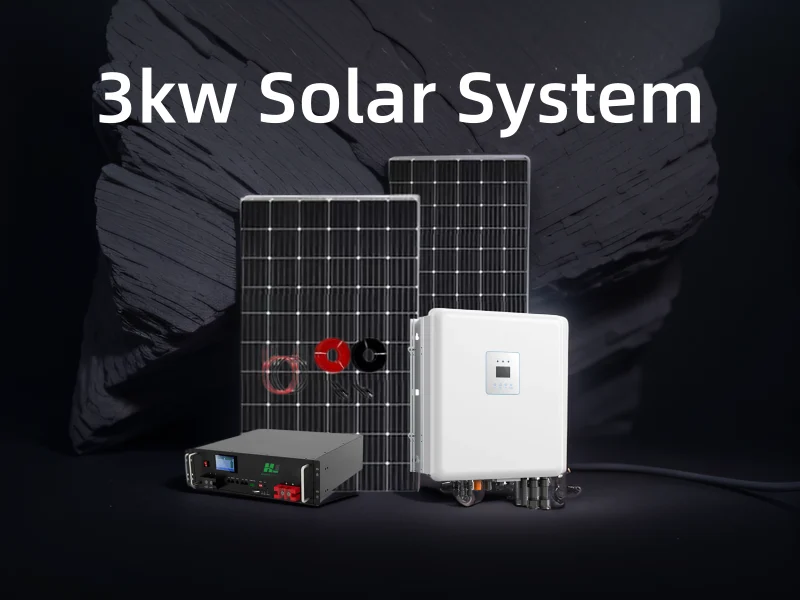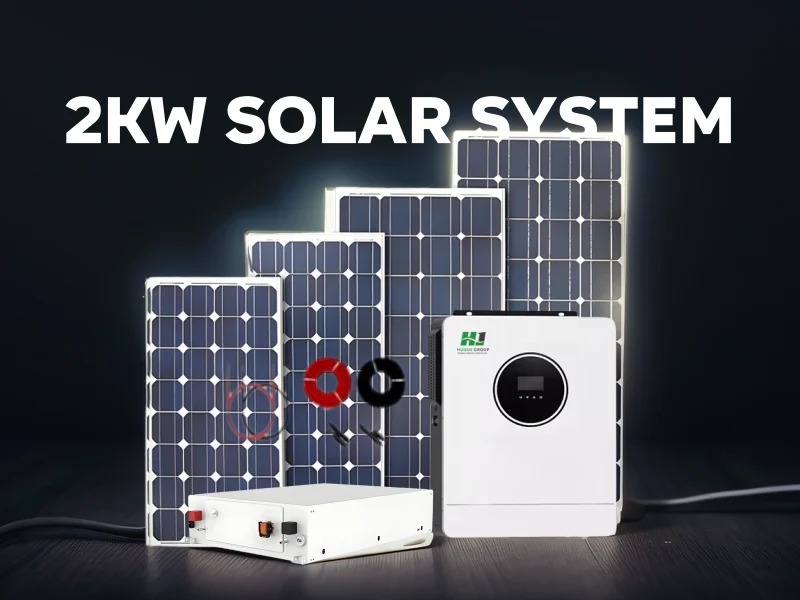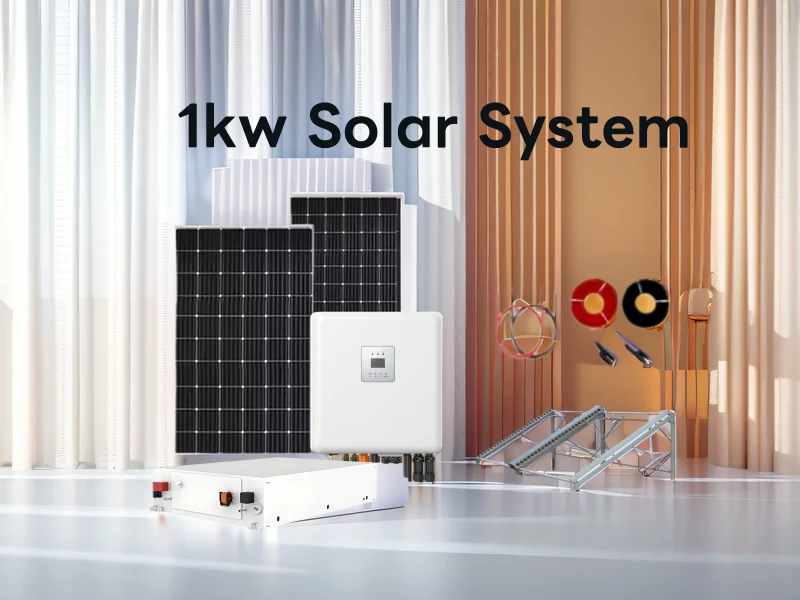How Much Does a 10kW Solar System Cost for a Manufacturing Plant?
Manufacturing plants in Pakistan face significant challenges from rising electricity costs, frequent power outages, and voltage fluctuations that affect production quality and efficiency. A 10kW solar system can help offset energy costs and provide reliable power for small to medium manufacturing operations. This guide examines current pricing, implementation strategies, and real-world examples specifically for manufacturing plants in Pakistan.
Current Pricing Structure (As of October 2024)
A 10kW manufacturing facilities solar system in Pakistan typically costs between PKR 1,700,000 to PKR 2,800,000 (approximately $6,100 to $10,000), depending on system configuration, quality tier, and specific industrial requirements.
| Component | Cost Range (PKR) | Manufacturing-Specific Considerations |
| Solar Panels (10kW) | 850,000 - 1,150,000 | Higher durability panels recommended for industrial environments |
| Industrial-Grade Inverter | 350,000 - 500,000 | Three-phase capability for machinery applications |
| Mounting Structure | 150,000 - 200,000 | Reinforced structures for industrial rooftops |
| Power Optimization Equipment | 100,000 - 200,000 | Voltage stabilizers, power factor correction |
| Balance of System | 180,000 - 250,000 | Heavy-duty cables, industrial-grade protection |
| Installation & Labor | 180,000 - 300,000 | Specialized electrical work for factory settings |
| Battery Backup (Optional) | 450,000 - 900,000 | For critical manufacturing processes |
| Monitoring & Control System | 70,000 - 150,000 | Integration with factory management systems |
Real Examples from Pakistani Manufacturing Sector
Example 1: Textile Processing Unit in Faisalabad
Manufacturing Type: Small textile dyeing facility System Size: 10.5kW with power factor correction Installation Date: May 2024 Total Cost: PKR 1,950,000 (Grid-tied system) Monthly Savings: PKR 55,000-70,000 Additional Benefits: Reduced production delays from power outages ROI Period: 2.9 years Technical Details: Three-phase connection supporting dyeing machines and pumps
Example 2: Metal Fabrication Workshop in Gujranwala
Manufacturing Type: Sheet metal fabrication System Size: 10kW with 15kWh battery backup Installation Date: March 2024 Total Cost: PKR 2,650,000 (Hybrid system) Monthly Savings: PKR 60,000-75,000 Additional Benefits: Consistent power for precision cutting equipment ROI Period: 3.6 years Technical Details: System designed to support induction motors with high starting currents
Example 3: Food Processing Unit in Karachi
Manufacturing Type: Bakery products manufacturing System Size: 10.2kW Installation Date: January 2024 Total Cost: PKR 1,850,000 (Grid-tied with net metering) Monthly Savings: PKR 65,000-80,000 Additional Benefits: Improved product consistency with stable power ROI Period: 2.4 years Technical Details: Synchronized with daytime production schedule for maximum self-consumption
Example 4: Pharmaceutical Manufacturing in Lahore
Manufacturing Type: Small-scale pharmaceutical production System Size: 10kW with 20kWh battery storage Installation Date: August 2023 Total Cost: PKR 2,750,000 (Hybrid system with critical load backup) Monthly Savings: PKR 50,000-65,000 Additional Benefits: GMP compliance maintained during outages ROI Period: 4.2 years Technical Details: Separate circuits for critical quality control equipment
Step-by-Step Implementation Process for Manufacturing Plants
1. Manufacturing-Specific Energy Assessment
- Conduct detailed load analysis of all production equipment
- Analyze power quality issues affecting machinery (harmonics, power factor)
- Document production losses from power interruptions
- Create energy consumption profile across different shifts
- Measure peak demand during manufacturing cycles
2. Technical Feasibility Study
- Evaluate factory roof structural capacity (industrial roofs often have different load ratings)
- Assess available unshaded area for panel installation
- Analyze electrical infrastructure compatibility
- Determine optimal panel orientation considering factory layout
- Evaluate grid connection quality at the manufacturing facility
3. System Design for Manufacturing Environment
- Calculate optimal system size based on daytime production schedule
- Design for three-phase compatibility if required
- Consider power quality improvement equipment integration
- Plan for expansion as production grows
- Design lightning protection system (critical for exposed industrial settings)
4. Financial Analysis
- Calculate production losses from power outages
- Determine energy cost per unit of production
- Compare financing options against operational savings
- Analyze impact on product quality and consistency
- Develop detailed ROI projection including maintenance costs
5. Equipment Selection for Industrial Applications
- Choose solar panels with high dust and heat resistance for factory environments
- Select inverters with industrial communication protocols
- Specify cables with higher temperature ratings for factory conditions
- Choose mounting systems designed for industrial metal roofing
- Select monitoring systems compatible with factory automation equipment
6. Permitting and Industrial Compliance
- Obtain No Objection Certificate from factory inspectorate
- Apply for net metering connection with DISCO
- Ensure compliance with industrial safety regulations
- Obtain necessary structural certifications for roof loading
- Secure approvals from insurance providers for factory policy
7. Industrial-Grade Installation
- Schedule installation during planned production downtime
- Install with minimal disruption to manufacturing processes
- Implement proper grounding for industrial environment
- Integrate with existing backup power systems
- Test compatibility with sensitive manufacturing equipment
8. Manufacturing-Specific Commissioning
- Test system under various production load scenarios
- Configure inverters for optimal performance with machinery
- Train production and maintenance staff on system operation
- Verify performance under peak manufacturing conditions
- Document baseline performance metrics for production environments
9. Production-Integrated Monitoring
- Integrate solar monitoring with production management systems
- Set up alerts for production managers when system underperforms
- Track energy production against manufacturing output
- Monitor power quality parameters critical to machinery
- Establish maintenance protocols aligned with production schedules
Industry Context for Manufacturing Sector in Pakistan
Manufacturing-Specific Challenges
- High Energy Intensity: Manufacturing operations often require 2-3 times more energy per square foot than commercial spaces
- Production Continuity: Even brief power interruptions can cause significant product waste and quality issues
- Power Quality Requirements: Manufacturing equipment often requires stable voltage and frequency
- 24/7 Operations: Many factories operate multiple shifts, affecting solar self-consumption rates
- Space Constraints: Production machinery often limits available roof area for solar installation
Regulatory Environment for Industrial Solar
- Industrial Net Metering Policy: Special provisions for three-phase industrial connections
- Alternative Energy Development Board (AEDB)equipment certification for industrial applications
- Import Duty Exemptions: Available for machinery and equipment including renewable energy
- Industrial Energy Efficiency Standards: Solar can help meet government-mandated efficiency targets
- Carbon Credit Potential: Manufacturing facilities can access additional revenue through carbon credits
Financing Options for Manufacturing Sector
- State Bank of Pakistan's Refinance Scheme for Renewable Energy: Preferential rates for industrial users
- SME Financing: Specialized programs with lower collateral requirements
- Energy Performance Contracting: Vendors guarantee energy savings
- Equipment Leasing: Operational expense model rather than capital investment
- International Climate Finance: Available for manufacturing sectors reducing carbon footprint
Manufacturing-Specific ROI Considerations
Typical 10kW System for Manufacturing (PKR 2,000,000):
- Average monthly electricity savings: PKR 60,000-75,000
- Production loss avoidance: PKR 20,000-40,000/month (dependent on industry)
- Quality improvement benefits: PKR 10,000-30,000/month
- Maintenance costs: PKR 5,000-8,000/month
- Net monthly benefit: PKR 85,000-137,000
- Simple payback period: 1.5-2.5 years
- 10-year NPV (Net Present Value): PKR 8,500,000-12,000,000
- IRR: 45-60% (significantly higher than commercial applications)
System Design Considerations by Manufacturing Type
Textile Manufacturing
- Key Challenge: Dust from fiber processing affecting panel performance
- Recommended Configuration: Grid-tied with minimal battery backup
- Critical Design Element: Enhanced cleaning systems and dust-resistant panels
- Typical Payback: 2.5-3 years
Metal Fabrication
- Key Challenge: High instantaneous power demands from welding equipment
- Recommended Configuration: Hybrid system with power stabilization
- Critical Design Element: Oversized inverters to handle inrush currents
- Typical Payback: 3-3.5 years
Food Processing
- Key Challenge: Strict temperature control and hygiene requirements
- Recommended Configuration: Grid-tied with critical load backup
- Critical Design Element: Integrated monitoring with food safety systems
- Typical Payback: 2-3 years
Pharmaceuticals
- Key Challenge: GMP compliance and validation requirements
- Recommended Configuration: Hybrid system with extended backup
- Critical Design Element: Fail-safe power transfer for sensitive processes
- Typical Payback: 3.5-4.5 years
Plastic Manufacturing
- Key Challenge: High heat loads from extrusion processes
- Recommended Configuration: Grid-tied with thermal integration
- Critical Design Element: Heat-resistant equipment for machinery areas
- Typical Payback: 2.5-3 years
Maintenance Considerations for Manufacturing Environments
Manufacturing environments present unique maintenance challenges for solar systems:
- Cleaning Frequency: Industrial areas require monthly panel cleaning (vs. quarterly for commercial)
- Electrical Inspections: Quarterly inspection of connections due to vibration from machinery
- Monitoring Integration: Maintenance alerts should be integrated with production management
- Staff Training: Production maintenance staff should receive solar system training
- Spare Parts: Critical components should be kept on-site to minimize production downtime
Conclusion
A 10kW solar system represents a strategic investment for manufacturing plants in Pakistan, offering not just energy cost savings but also significant benefits in production reliability, product quality, and operational resilience. With current prices ranging from PKR 1.7 to 2.8 million, most manufacturing facilities can expect payback periods of 2-4 years, significantly shorter than commercial or residential applications due to the higher value of uninterrupted production.
The implementation process requires careful consideration of manufacturing-specific factors, including production schedules, machinery power requirements, and factory safety regulations. As Pakistan's energy crisis continues to impact industrial competitiveness, solar power offers manufacturing plants a viable path to energy independence and cost stability. For maximum return, manufacturing facilities should ensure their solar systems are properly integrated with production processes and maintained according to industrial standards.

